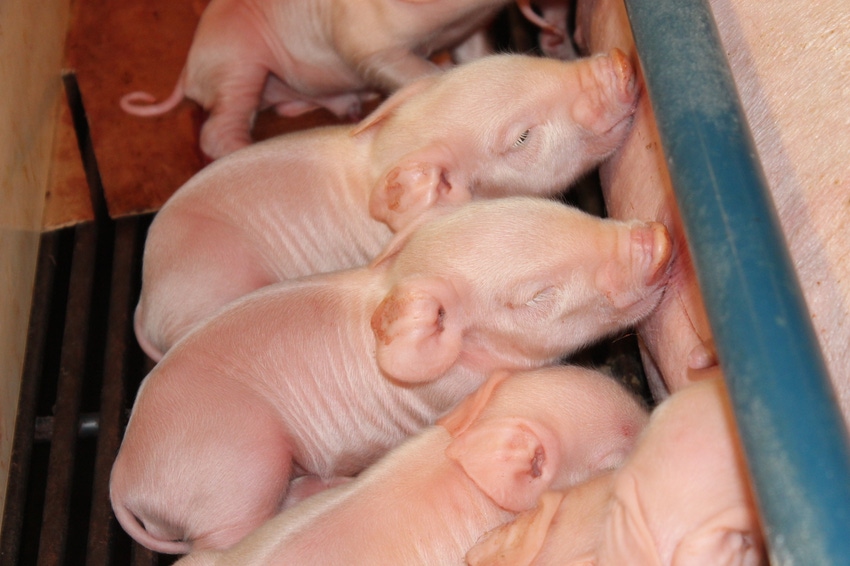Results from the present study provide some guidance with regards to which litters or pigs are at-risk for low colostrum consumption.
June 23, 2022

Consumption of colostrum is critical for newborn piglets. It is a good source of energy which helps with their temperature regulation and is their main defense against diseases.
A recent study examined relationships among birth characteristics, early nursing behaviors and colostrum consumption in over 600 piglets by measuring their immunocrits at 36 hours after farrowing. Immunocrit is an estimate of the relative amount of immunoglobulins in the blood including Immunoglobulin G for which colostrum is the sole source. Immunocrits varied from 0.002 to 0.428 with an average of 0.076. The average for weaned piglets was 0.078, but only 0.054 for those that died during lactation.
The four most important characteristics associated with low immunocrits were:
being born in a large litter (>17 total born).
nursing the last three pairs of teats.
having a low birthweight (<2.5 lbs).
being born more than an hour after the onset farrowing.
This information may be useful for farms wanting to adopt early intervention strategies for entire litters and/or individual piglets. Administration of artificial colostrum, assistance during early nursing bouts and utilization of split-suckling techniques have all been shown to increase immunoglobulin concentrations in newborn piglets, but are seldom used in practice because they are labor intensive and not necessary for every litter or piglet. Results from the present study provide some guidance with regards to which litters or pigs are at-risk for low colostrum consumption.
On an individual basis, small piglets and those nursing the rear teats once a sow is done farrowing would likely benefit from attempts to increase their colostrum intake. On a litter basis, total number born could easily be used as a distinguishing characteristic for intervention.
Many farms record when sows have their first piglet. Recording the number of piglets present one hour after farrowing began on the sow card and then comparing this to total born when it's over may be the most practical way to identify litters from sows with long farrowing durations. For example, if the number present at one hour is 50% or less of her total born, then that litter might be a candidate for one of the techniques mentioned earlier.
Every farrowing barn environment is unique, however, it does appear that a variety of options exist for identifying litters and piglets at-risk for low colostrum intake.
Jenkins is a graduate student of William Flowers at North Carolina State University focusing on reproductive physiology.
Source: North Carolina State University Extension, which is solely responsible for the information provided, and wholly owns the information. Informa Business Media and all its subsidiaries are not responsible for any of the content contained in this information asset.
You May Also Like



